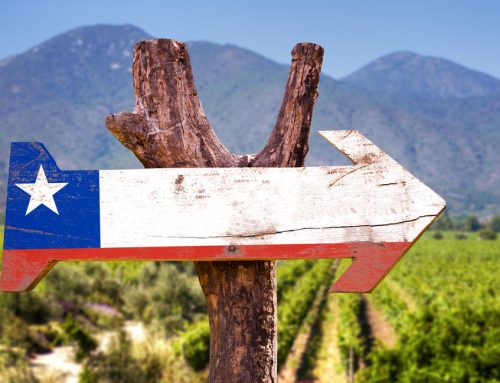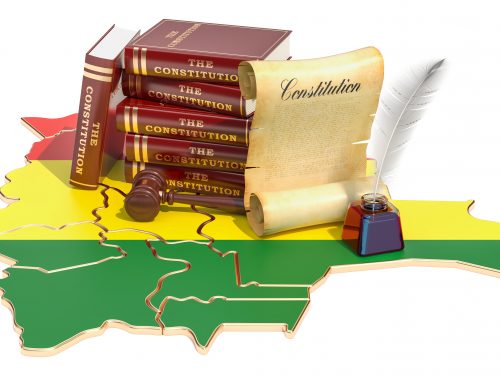In a continuing effort to curb the illegal importation of Peruvian cultural property into the United States, the two nations have renewed their bilateral Memorandum of Understanding (MOU).

In effect since 1997, the agreement is officially entitled “Memorandum of Understanding Between the Government of the United States of America and the Government of the Republic of Peru Concerning the Imposition of Import Restrictions on Archaeological Material from the Pre-Hispanic Cultures and Certain Ethnological Material from the Colonial Period of Peru.”
This agreement is possible under the U.S. Cultural Property Implementation Act (CPIA), which provided implementing legislation for the UNESCO Convention on the Means of Prohibiting and Preventing the Illicit Import, Export and Transfer of Ownership of Cultural Property (UNESCO 1970). Recognizing the irreparable threat of losing their cultural history that many nations experienced, UNESCO 1970 provides an international framework to provide protection to deserving nations.
Pre-Colombian history
Peru has a rich Pre-Colombian history, and the Latin American nation contains some of the most sought after Pre-Colombian art. The location of some of South America’s most significant archaeological sites, for a long time, Peru was a rich trading ground for art-lovers. Collectors and art dealers found in Peru a rich market for antiquities, along with a minimal level of enforcement from domestic authorities. This combination of factors lead to the pillaging of Peru’s antiquities, an example of which was the plunder of countless Moche artifacts in the aftermath of the historic find at Sipan, Peru.
By renewing this agreement, the United States has expressed its continuing respect for the cultural heritage of Peru that is embodied in its antiquities. The MOU protects objects created by ancient cultures such as the Moche, the Chavin, the Cuzco, and the Incas, which were created before the start of the Colonial Period in 1532. Additionally, the MOU also protects materials created during the Colonial Period until 1821 if the objects in question meet certain qualifications.
According to the memorandum, any materials meeting the MOU’s criteria may only enter the United States if accompanied by a legitimate export permit issued by the Peruvian Government or proof of provenance prior to 1997, when the MOU went into effect.
The Extension of the MOU Agreement:
The extension of the agreement reflects the U.S. Government’s recognition that nations such as the United States that purchase and collect such art must work hand in hand with nations such as Peru that contain Pre-Colombian antiquities. Prior to the imposition of the CPIA, the stance of the United States on imports was very different. It was not illegal for cultural objects to be imported into the United States just because they were illegally exported from the source nation. Individuals in many poorer nations such as Peru took to pillaging archeological sites in order to capitalize on the demand for these valuable objects. There was too much money to be made, domestic enforcement was minimal due to lack of resources and corruption, and many smuggling networks developed in the process. Many important sites have been destroyed, rendering their historical and educational contributions negligible.
This commitment reflects the desire to impose demand side controls on the dissemination of cultural objects in addition to supply side controls implemented by Peru. Without help from nations such as the US whose collectors demand such artifacts, Peru´s cultural property regime would be ineffectual. However, Peru´s problem of cultural property exports is exacerbated because of Peru´s lack of domestic enforcement, which increases the nation´s reliance on countries such as the U.S. to enforce its cultural property regime. Peru, and other Latin American nations with concerns about the sale and export of antiquities, could take the example of other source countries such as Egypt whose cultural property is in demand. Egypt´s robust domestic cultural property regime has crippled smuggling and illegal export due to harsh punishments for looters and those found to be exporting such materials. In turn, Egypt has developed a world class system of archaeology and preservation that is a source of great pride for Egyptians.
The extension of the MOU with Peru is bad news for American art dealers and art collectors, who view Peru as a legitimate trading ground for acquiring important pieces of Pre-Colombian art. Additionally, opponents of the MOU argue that the Peruvian government has proven to be unable to protect its precious archeological sites from looting, and that the objects will be better cared for in places such as the United States.
On the other hand, the extension of the MOU is a victory for archeologists, who want undiscovered sites to remain intact rather than be looted, and for the Government of Peru, which needs the aid of the governments of demand nations in order to have a chance to effectively safeguard it’s cultural property.
The United States has active MOUs with several Latin American nations, including Bolivia, Colombia, El Salvador, Guatemala, Honduras, Nicaragua, and Peru.




